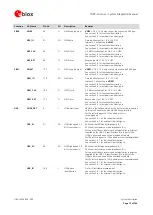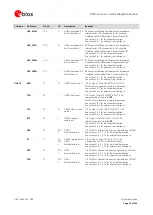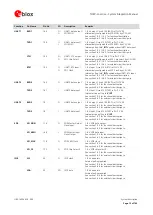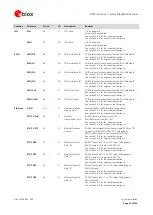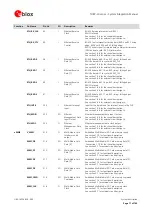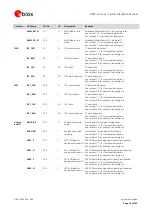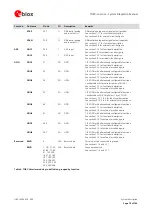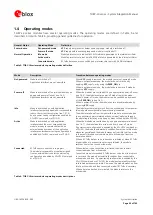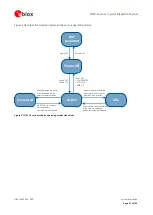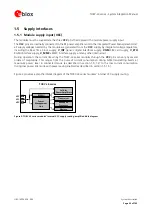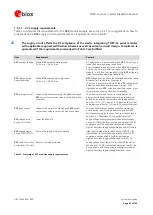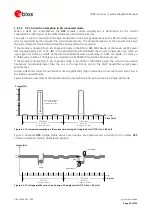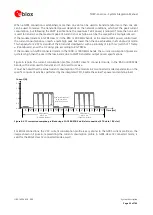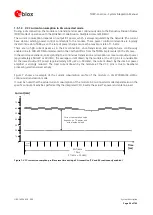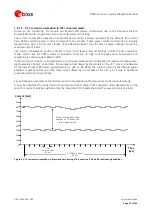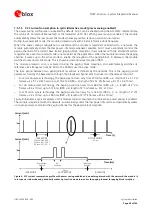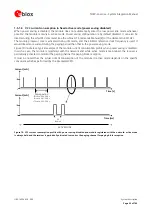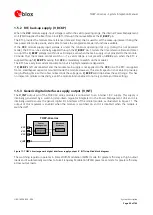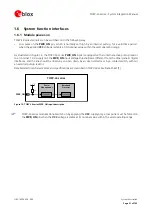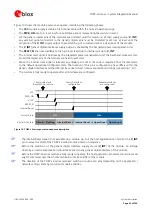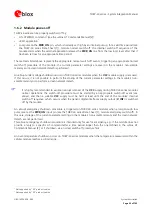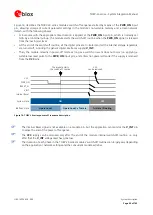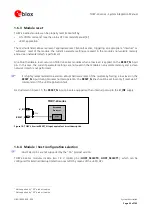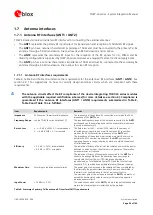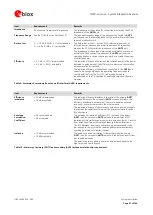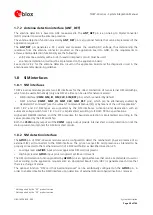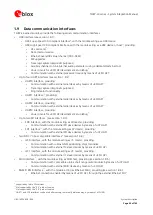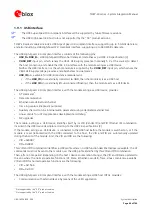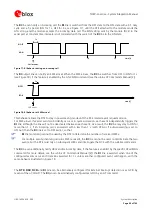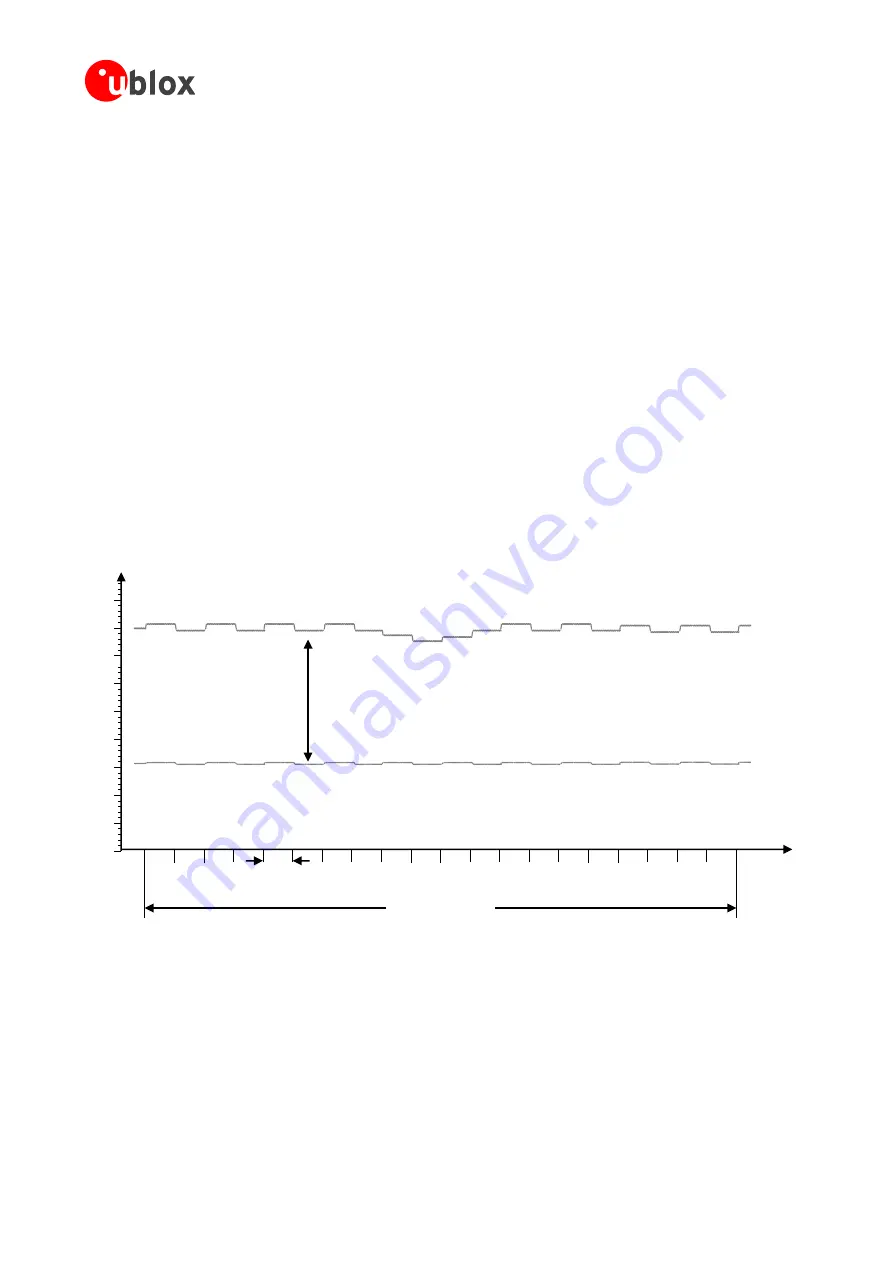
TOBY-L4 series - System Integration Manual
UBX-16024839 - R04
System description
Page 27 of 143
1.5.1.4
VCC current consumption in LTE connected mode
During an LTE connection, the module can transmit and receive continuously due to the Frequency Division
Duplex (FDD) mode of operation used in LTE radio access technology.
The current consumption depends on output RF power, which is always regulated by the network (the current
base station) sending power control commands to the module. These power control commands are logically
divided into a slot of 0.5 ms (time length of one Resource Block), thus the rate of power change can reach a
maximum rate of 2 kHz.
The current consumption profile is similar to that in 3G radio access technology. Unlike the 2G connection
mode, which uses the TDMA mode of operation, there are no high current peaks since transmission and
reception are continuously enabled in FDD.
In the worst case scenario, corresponding to a continuous transmission and reception at maximum output power
(approximately 250 mW or 24 dBm), the average current drawn by the module at the VCC pins is considerable.
At the lowest output RF power (approximately 0.1 µW or –40 dBm), the current drawn by the internal power
amplifier is greatly reduced and the total current drawn by the module at the VCC pins is due to baseband
processing and transceiver activity.
Figure 8 shows an example of the module current consumption profile versus time in LTE connected mode.
It must be noted that the actual current consumption of the module in LTE connected mode depends also on the
specific concurrent activities performed by the integrated CPU, beside the actual Tx power and antenna load.
Time
[ms]
Current [mA]
Current consumption value
depends on TX power and
actual antenna load
1 Slot
1 Resource Block
(0.5 ms)
1 LTE Radio Frame
(10 ms)
0
300
200
100
500
400
600
700
800
900
Figure 8: VCC current consumption profile versus time during LTE connection (TX and RX continuously enabled)

